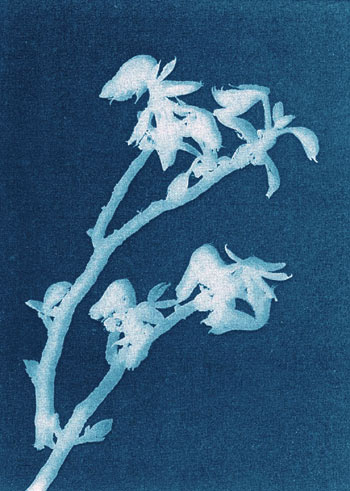Blueprints
In
the 20th century Man Ray devised the "photogram",
placing objects or cut-out pieces of paper
like stencils onto photo-sensitive paper
and exposing them to light, essentially
repeating Fox Talbot’s "photogenic
drawings". In 1931 in collaboration with
Man Ray, the surrealist Max Ernst produced
original illustrations for a book in a
similar way but instead of using objects,
he made drawings and frottages on transparent
paper (tracing paper) for exposure onto
photographic paper. Blueprints are made
in the identical way but exposed onto paper
impregnated with iron salts.
The
blueprint process had been invented in
1842 by Herschel though it was only commercially
exploited much later for printing engineer’s
and architects’ plans. Iron salts
turn blue on exposure to light and the
image is fixed by washing the sheet in
water.
Blueprints
are largely associated with a single artist,
John Banting. He made his drawings on tracing
paper, sometimes achieving interesting
textures by painting with the thin paper
placed over a rough surface in a frottage
technique. His prints from the early 1930’s
are negative, with white images against
a blue ground, and are mainly surrealist
figure subjects. The prints from later
in the 30’s are abstract and achieved
as positive blue images against a white
ground (see right). Many of the individual
blueprints were cut up and used in Banting’s
collages. Banting did not own his own means
of printing, but took his drawings to a
local commercial blueprint office.

Bertha
Jacques (1863–1941): "Orchid". Cyanotype,
c1905. (305 x 223 mm)
In
a variation on the theme, the American
artist Bertha Jacques (1863-1941) experimented
with cyanotypes, technically closer to
Fox Talbot’s photogenic drawing,
where a natural object such as a flowering
branch of a plant was laid on a paper with
an emulsion of cyanide compounds and exposed
to sunlight. The image appeared as a white
silhouette against a rich blue in the exposed
areas. |